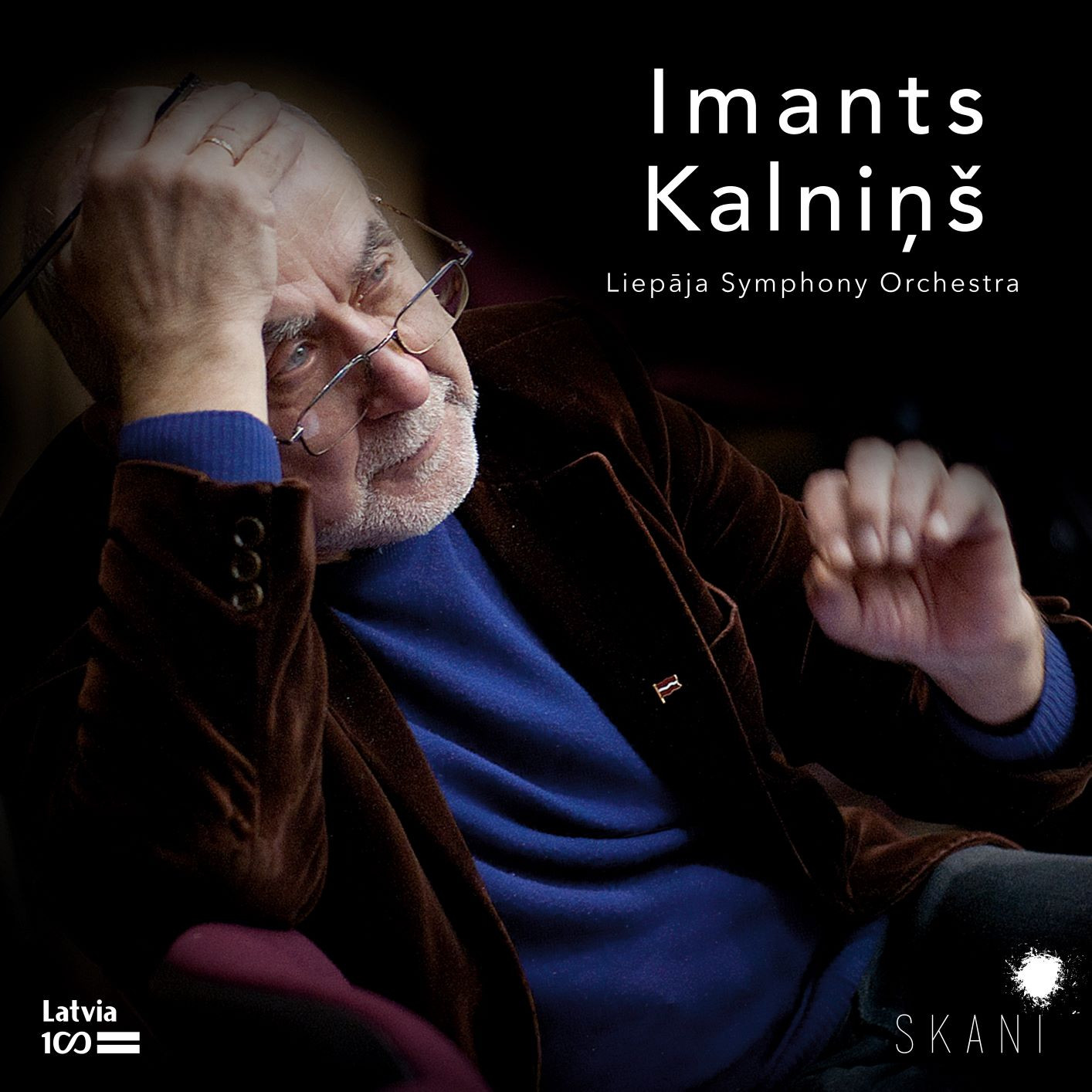A few months ago I reviewed Imants Kalniņš' Symphony No. 4, a novel work frequently referred to as the "Rock" Symphony. The pairing was the Concerto for Cello and Orchestra, a more than competent student work. The orchestra was the Liepāja Symphony Orchestra under Atvars Lakstīgala, and the performances I remarked were ".....superbly crafted and immensely polished.....". The album had the enticing title Sound of Freedom. Skani have just released two more of the composer's six symphonies. This time we have Nos. 5 and 7, and again the Liepāja Symphony Orchestra and Lakstīgala do the honours.
A bit of background about the composer will be helpful. He was born in Riga in 1941 and studied music at the Latvian Conservatory of Music with Ādolfs Skulte from 1960-1964, graduating with flying colours. He has a number of strings to his bow, working not only as a composer, but also as a performing musician. He's also made inroads into politics. There are a sizeable roster of compositions to his name, including six symphonies, several operas, oratorios, cantatas, songs and a substantial amount of film and theatre music. He's also known for his rock music, and during the 1960s led the Liepāja rock band 2xBBM, popular for its heartfelt songs and hippy lifestyle. Throughout his life he’s been very much a free spirit, following his instincts. His youth was spent frequenting the cafés in Riga, where he mixed with intellectuals, poets, painters and theatre people. His brother Victors is a poet, drawn to American literature and culture. This directed the brothers towards the rock phenomenon, and in 1971 they collaborated, Victors providing the libretto, on Ei, jūs tur! (Hey, you there!), the first rock opera in the USSR.
What better way to launch proceedings than with the attractive orchestral miniature Santa Cruz. The catchy, lilting rhythms and sway of this sunny sojourn prove an ideal opener.
Six years separates the Fifth Symphony from its predecessor. It was composed in 1979 and is cast in four movements. The opening is vividly reminiscent of insects busy at work, the music conveying tension and restlessness. Kalniņš employs ostinato rhythms which have a motoric effect. In the central contrasting section the music clouds over and an air of mystery pervades. Harp passages add an extra alluring hue to the canvas, as do some lightly textured woodwind and percussion brushstrokes. It's not long, however, before the nervousness returns, with the music ending without finding contentment. The slow movement seems to me like the emotional heart of the Symphony. Its melancholic mood is both elegaic and sombre. The influence of Shostakovich reveals itself in the wit and sarcasm appearing along the way. That same influence is ever present in the scherzo-like movement which follows. The finale boasts some lovely woodwind writing and diaphanous sonorites, and ends majestically with quotes from a Latvian folk song "I walked through the silver birch grove".
The Concerto for Oboe and Orchestra of 2012 was the composer's desire "to counter the distorted aspects of life with pure beauty and unmuddied harmony with the endorphins of human and familial joy". Well, that's certainly how Imants Zemaris describes the work in his accompanying liner. The first movement is bright, breezy and carried, as it were, on the wind. The soloist hits the ground running from the start, buoyed up by rhythmic waves and swirls. The central movement is all about stillness, calm and meditation. There's a static quality to the music, around which Endzelis' oboe weaves a magical spell. The finale smiles and struts along with a spring in its step. I'm particularly won over by the way Atvars Lakstīgala delicately points up the lightly textured orchestration.
There's an air of innocent simplicity in the opening of the Seventh Symphony (2015). Woodwinds do much of the heavy lifting and, once again, the orchestration is light and airy. Gradually Kalniņš ups the rhetoric, with dance-like rhythms and motifs entering the stage. The Andante, which follows, is a tranquil affair. The luscious pastel shades are convincing proof of Kalniņš the master colourist. Then comes a spry scherzo, spikily accented. Of the four movements, I found the finale the least successful; I couldn't really sense the direction it was taking.
This is tonally pleasing music that would appeal to anyone keen to explore new horizons. Well played and well recorded, who could ask for more.
Stephen Greenbank
www.musicweb-international.com
Imants Kalniņš
Izpildītāji
Pēteris Endzelis
- oboja
Liepājas Simfoniskais orķestris
Atvars Lakstīgala
- diriģents
Māris Sirmais
- diriģents
Sērija
Simtgade
Ieraksts
2017
Izdošanas datums
21.09.2018
Skaņdarbi
Apraksts
LMIC 067
“Santakrusa”, Obojas koncerts un Septītā simfonija pirmatskaņojumu piedzīvo 2016.gada sākumā Imanta Kalniņa jubilejas koncertos Liepājā, Cēsīs un Rēzeknē. Visās šajās pilsētās uzceltas jaunas, skanīgas koncertzāles, kas noteikti ir daļa no komponista izsapņotās Latvijas veiksmes stāsta. Izpildītāji – tie paši, kas šajos ierakstos: Liepājas simfoniķi, obojists Pēteris Endzelis, diriģents Māris Sirmais.
Savukārt tandēmā ar diriģentu Atvaru Lakstīgalu nu tapis Piektās ieraksts. Kopā ar viņu Liepājas simfoniķi 2015. gadā ieskaņoja arī vienu no pašiem pirmajiem SKANI albumiem - ar Imanta Kalniņa 4. simfoniju un Koncertu čellam ar orķestri (soliste Marta Sudraba).
Kritika

